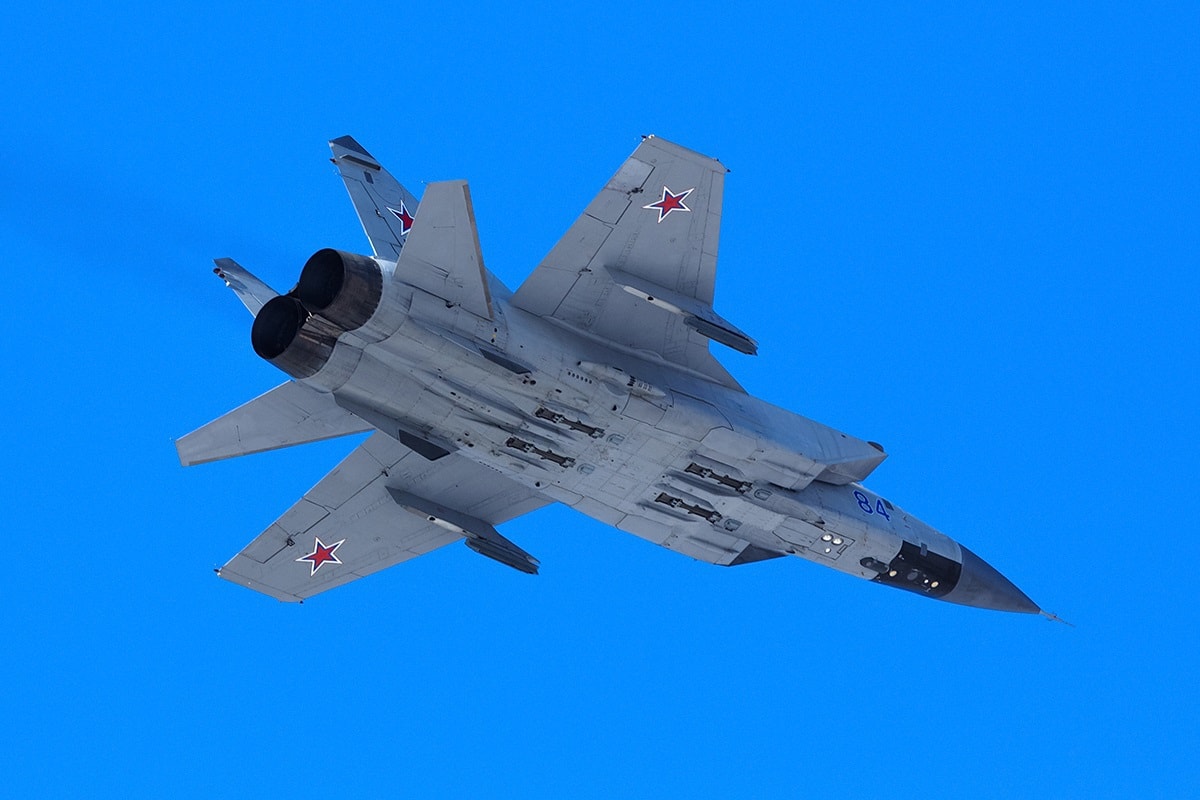Russia has remained uneasy as NATO has increased patrol flights over the neutral waters of the Barents Sea. Moscow has seen those waters as its own, and that was made clear on Thursday when the Russian Navy’s Northern Fleet scrambled a fighter aircraft from its air defense quick reaction forces for the second straight day. During the recent sortie, a MiG-31 interceptor/fighter was sent to intercept a Norwegian Air Force P-3C Orion maritime patrol plane.
The Norwegian aircraft was conducting a routine patrol when Russian air defense systems spotted it approaching Russia’s state border. The MiG-31 was scrambled, the Northern Fleet’s press office said in a statement, according to a report from Tass.
“The Russian fighter’s crew identified the aerial target as a Norwegian Air Force P-3C Orion maritime patrol aircraft and shadowed it over the Barents Sea,” the statement said.
The aerial close encounter came just a day after Russia also scrambled a MiG-31 to intercept a P-3C Orion over the same waters. In both incidents, the Norwegian aircraft turned away from the Russian state border, and the Russian fighter returned to its home base. Whether it was the same air in both incidents remains unclear.
Russian media added that “[T]he MiG-31 fighter performed its flight in strict compliance with the international rules of using the airspace. The foreign military plane was not allowed to violate the Russian state border.”
This is far from the first time a MiG-31 has crossed paths with a P-3C Orion in the Barents. Russia has increased its presence in the region, and the MiG-31 (codenamed “Foxhound” by NATO) has been a key component. In recent months, the Russian military has begun to deploy the aircraft over the arctic regions – truly pushing the bounds for the “all-weather” twin-engine fighter.
Russia maintains hundreds of these fighters, which serve as part of the nation’s multi-layered air defense network. The long-range, two-seat Mikoyan MiG-31 is well-suited to a home-defense interceptor role as it can attain speeds in excess of Mach 3 while the supersonic jet has a ceiling of 70,000 feet.
It was just a month ago that a MiG-31 was scrambled to intercept and escort a U.S reconnaissance aircraft over the neutral waters of the western Pacific. The Eastern Military District press office reported that the Russian fighter crew identified a U.S. Air Force RC-135 strategic reconnaissance aircraft.
It has been reported that the Russian military has upgraded the MiG-31 Foxhound with modern weapons and avionics, as well as a network-centric control and phased array radar. The upgraded MiG-31BM can also employ R-33 long-range air-to-air missiles and R-73 short-range air-launched weapons. It is powered by two D-30F6 engines, which provide a take-off thrust of 15,500 kgf each, and the fighter-interceptor has a maximum speed of 3,000 km/h and a ceiling of 20,600 meters. It is also outfitted with a mid-air refueling system.
There are also reports that Moscow has explored the option of arming the home-defense interceptor with hypersonic missiles, which would make the MiG-31 interceptor an adversary to any reconnaissance aircraft or even potential bomber that dares approach Russian airspace.
Peter Suciu is a Michigan-based writer who has contributed to more than four dozen magazines, newspapers and websites. He regularly writes about military small arms, and is the author of several books on military headgear including A Gallery of Military Headdress, which is available on Amazon.com.

